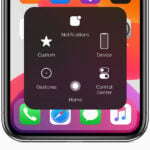It’s frustrating when an iPhone’s battery drains quickly after an update. Many users have reported issues with their battery life post-update. One quick solution is to force restart your iPhone, as this can clear out temporary glitches.
It’s common for apps and features to take up to 48 hours to adjust after a new iOS update. During this period, your iPhone may use more power than usual. Patience is key when dealing with battery drain issues after updating to iOS 17.
Automatic app updates can also affect battery life after an iOS update. Keep an eye on any new apps or updates that might be draining your battery. If your battery is still draining fast after a few days, further troubleshooting might be needed.
Why Battery Drains After Updates
- Background re-indexing: After a big update, your iPhone reprocesses photos, files, and apps, which increases power use for a few days (source: Apple Community).
- New features: Updates may enable features that consume more power (e.g., widgets, background refresh).
- App incompatibility: Some apps may not be optimized for the new iOS version.
- Battery health: If your battery is below 80% health, updates can make issues more noticeable.

Solutions and Tips
1. Give It Time
- Wait 24–72 hours after the update. Your iPhone may be running background tasks that will settle down.
2. Check Battery Usage
- Go to Settings > Battery
- Check which apps are consuming the most power.
- If an app is draining excessively, update or reinstall it.
3. Enable Low Power Mode
- Go to Settings > Battery > Low Power Mode, or toggle it from Control Center.
- This reduces background activity and visual effects.
4. Update Apps
- Open the App Store > Updates and update all apps. Many developers release patches after iOS updates.
5. Adjust Background Settings
- Background App Refresh: Go to Settings > General > Background App Refresh and turn it off for non-essential apps.
- Location Services: Go to Settings > Privacy & Security > Location Services and set apps to While Using.
6. Manage New Features
- Disable Live Activities or unnecessary widgets.
- Turn off Always-On Display (Pro models) if you don’t need it.
7. Restart or Force Restart
- A simple restart often helps stabilize processes after an update.
8. Reset Settings (if needed)
- Go to Settings > General > Transfer or Reset iPhone > Reset > Reset All Settings.
- This won’t erase data, but resets Wi-Fi, Bluetooth, and preferences.
9. Update to the Latest Patch
- Apple often releases quick fixes (e.g., iOS 18.1 → 18.1.1).
- Go to Settings > General > Software Update and install the latest version (source: SimplyMac).
10. Check Battery Health
- Go to Settings > Battery > Battery Health & Charging.
- If it’s below 80%, consider a battery replacement.
🧰 Extra Pro Tips
- Use Dark Mode to save power on OLED screens.
- Avoid charging your phone overnight every day—keep it between 20–80% for longer battery health.
- If nothing helps, a clean reinstall of iOS via Finder or iTunes can sometimes fix deep system issues.
✅ Bottom Line:
Some battery drain after an update is normal due to background processes, but if it persists, adjusting settings, updating apps, and checking battery health usually solves the issue.
Key Takeaways
- Battery drain is common after an iOS update.
- Restarting your iPhone can solve temporary glitches.
- Apps and features may take time to adjust post-update.
Identifying Battery Drain Factors Post-Update
When your iPhone battery drains quickly after an update, several factors may be at play. By looking into health, apps, and settings, we can identify what’s affecting your battery life.
Analyzing Battery Health and Capacity
Battery health and capacity are critical for performance. Every battery has a maximum capacity which can decrease over time. Check your battery health by going to Settings > Battery > Battery Health & Charging.
If your maximum capacity is below 80%, it might be time for a battery replacement. Your phone’s peak performance can also be affected if your battery’s health is poor. Knowing these details helps understand if the update has pushed the battery beyond its limit.
Assessing Apps and Background Processes
Apps and background processes can heavily impact battery life. After an update, certain apps may not be optimized, causing more drain.
Go to Settings > Battery to see which apps consume the most power. If an app is unusually high, check for updates or consider removing it. Background App Refresh can also use power. Turn it off for apps you don’t need by going to Settings > General > Background App Refresh.
Considering Settings and Features
Reviewing settings can reveal why your battery is draining. Screen brightness plays a huge role. Lower it under Settings > Display & Brightness. Using Low Power Mode helps extend battery life; enable it from Control Center or Settings > Battery.
Location Services can also drain power. Turn them off for apps that don’t need them under Settings > Privacy & Security > Location Services. Other features like keyboard haptics and the always-on display can also contribute to battery drain. Disabling these may improve battery performance.







